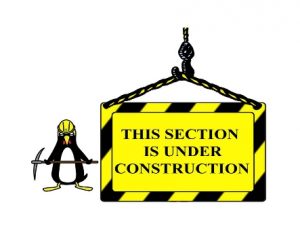
Introduction
Flowing from the section on Demand - Supply Co-ordination is the need for better landscape level co-ordination, especially as it relates to feeding city regions.
As discussed in many sections, Canada does not have a profession, systems and structures of food system planning.
In the early 2000s, World Wildlife Canada produced the Nature Audit, a report that examined the ecological health of the many ecozones of Canada, including 8 where agriculture is the major land use.
The landscape level is important for a number of reasons:
- Numerous "inefficiencies" at ecological, social and economic levels have emerged due to the lack of landscape level co-ordination, including nutrient flow distortions across and between regions, especially from countryside to city region; pollution problems associated with the concentration of a limited number of crops and / or animals in specific regions, with attendant biodiversity losses; economic concentration that flows from regional specialization; unnecesary movement of goods (redundant trade, convenient and coercive supply chains); lost economic opportunities.
- The era of importing to fully compensate for regional production deficiencies is likely compromised. Trade will continue but regions will have to rely more on their internal resources to feed their population, given heightened possibilities of disruptions to trade flows due to weather, political disruptions and economic dislocation.
- Regional gaps in food processing infrastructure in many parts of the country, particularly SME processing
- skewed cropping patterns relative to regional population requirements, particularly in horticulture and to some extent regional allocations in supply management
Some key landscape level questions are:
- What production is best suited to this particularly regional landscape?
- How should production be organized to minimize resource use in this landscape?
- Is there a sufficient supply of land to meet food production requirements?
- How do we optimize what this landscape produces to meet nutritional requirements of this regional population?
Key conceptual frameworks
A key conceptual framework is the foodshed (Kloppenberg et al., 1996). Two sub-categories, capacity and food flows. Shreiber et al 2021. https://iopscience.iop.org/article/10.1088/1748-9326/abad59/pdf
City region food system- City regions are a key challenge because they consume much more than they produce. The regional landscape needs to produce what is ecologically appropriate but also as much as possible provide nourishment to the city region. Blay Palmer, Sally Miller
Ecosystem planning - a relatively significant history of doing this in Canada related to specific regional ecosystem features, and more recently some municipal ones. Seven principles of ecosystem planning (from Tomalty et al., 1994):
- Use natural boundaries for planning units
- Design based on ecological processes and functions
- Consider long-term, wider geographic and cumulative effects
- Inter-jurisdictional structures and decision making, with strong linkages to decision makers
- Consultation, co-operation and partnerships
- long-term monitoring, feedback and adaptation
- an interdisciplinary approach to information
- Solid resourcing for implementation
Key challenges
Private land ownership, the interface between private property and public goods. How to affect what is produced in a region and where it is sold
Lack of data
Discontinuity between political and ecological boundaries
Land use and supply management histories
Limited existing authorities - need to use existing local and regional municipal, and provincial authorities, but future amendments to legislation would have to augment authorities
Some structures that partially serve such planning and co-ordination needs
There are regional governance structures in many provinces but the food system is not typically a significant part of their mandate. In some cases, subsidiary organizations with links to regional governance structures have some focus on food systems. See DSC for supply management. For example,
Greater Golden Horseshoe Food and Farming Alliance
supply chain organizations
Efficiency stage is better data as elaborated under DSC, and the new participation structures elaborated under Goal 7.
Substitution stage is adopting the legislation to create management boards. Use management board structure associated with ecological feature planning. Start with one in a major city in each province, eg. Vancouver, Edmonton, Saskatoon, Winnipeg, Toronto, Montreal, Fredericton, Halifax, Charlottetown, St. John's. All places with some significant FPC activity? Can be expanded later if necessary.
Key functions of a management board
- food flows analysis - current capacity and future potential. A couple of partial ones done in Canada - Waterloo Region (Desjardins et al., 2010) and Miller and Blay- Palmer for the Toronto City Region. Plus some 40 other studies from different parts of the globe.
- supply chain structures analysis
- ecological features assessment as it relates to sustainable production, building on existing analysis through a food system lens
- plans and recommendations to other bodies with decision making authority - supply management, provincial departments of agriculture, municipal and regional governments
- coordinates across organizations that have authorities
- runs roundtables with stakeholders on thematic issues
- facilitates commercial arrangements
- Key difficulty is that we don't currently have the mechanisms to shift functions, need new legislation to do so
New legislation
- Need model legislation to be adopted by each province. What is the leverage? Federal funding?
- First iteration sets up the organization and its mandate: Structure and size of board, budgets, staffing. Under authority of the Minister of Agriculture, but shifting as movement towards ministries of food occurs.

